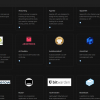As your application grows in popularity and usage, it becomes crucial to scale it effectively to handle increased traffic and demand. CapRover, a popular open-source PaaS (Platform as a Service), offers powerful features to help you scale your applications seamlessly.
CapRover is an excellent choice for small teams looking to simplify their development & deployment cycles.
In this article, we'll explore best practices for scaling your applications using CapRover on Farbyte's cloud infrastructure.
1. Understand Horizontal Scaling
Horizontal scaling, also known as scaling out, involves adding more instances (servers or containers) to handle increased load. CapRover makes it easy to scale your applications horizontally by allowing you to specify the number of replicas (instances) for each service.
2. Leverage Load Balancing
Load balancing is a critical component of horizontal scaling. It distributes incoming traffic across multiple instances of your application, ensuring better performance and availability. CapRover comes with built-in load balancing capabilities, automatically load balancing traffic across your application instances.
3. Monitoring and Auto-Scaling
Continuously monitoring your application's performance metrics is essential for effective scaling. CapRover uses Netdata, allowing you to track key metrics such as CPU usage, memory consumption, and request rates. Based on these metrics, you can configure make adjustments to the number of instances your app is running & find potential bottlenecks.
4. Optimise Resource Allocation
When scaling your applications, it's crucial to allocate resources efficiently. CapRover allows you to specify resource limits (CPU and memory) for each service, ensuring that no single service monopolises system resources. Additionally, you can leverage Farbyte's cloud infrastructure to provision the right amount of resources (CPU cores, RAM, and storage) for your application's needs.
5. Implement Caching Strategies
Caching can significantly improve the performance and scalability of your applications. CapRover supports various caching strategies, such as in-memory caching (e.g., Redis) and content delivery networks (CDNs). Implementing caching can reduce the load on your application instances, enabling them to handle more traffic.
6. Leverage Microservices Architecture
If your application is monolithic, consider breaking it down into smaller, independent microservices. CapRover's support for Docker Swarm containers makes it easier to manage and scale individual microservices independently, improving overall application scalability and resilience.
7. Use Persistent Storage
While scaling your application instances, it's essential to ensure data persistence. CapRover supports various persistent storage options, such as network file systems (NFS) and cloud storage providers (e.g., Amazon S3, Google Cloud Storage). This ensures that your application data remains available even if instances are scaled down or restarted.
8. One-Click Rollback
Imagine you've deployed a new version of your application, but shortly after, you realise it's plagued by bugs. In such situations, you don't have the luxury of time to revert your changes or fix the issues immediately. That's where CapRover's one-click rollback feature comes to the rescue.
With CapRover, rolling back to a previous, stable version of your application is as simple as clicking a button. Head over to the deployment tab, locate the version you want to revert to, and click on the "revert" icon next to it. CapRover will automatically initiate a new build and deploy the selected version, seamlessly replacing the buggy deployment.
It's important to note that the rollback process does not revert changes made to environment variables, persistent directories, or other application configurations. It solely reverts the deployed source code (image) to the selected version, ensuring that your application's data and settings remain intact.
This one-click rollback functionality is a game-changer, especially in critical situations where every minute counts. Instead of scrambling to fix bugs or manually revert changes, you can quickly roll back to a known, stable version of your application, minimising downtime and ensuring business continuity.
Conclusion
By following these best practices, you can effectively scale your applications using CapRover on Farbyte's cloud infrastructure, ensuring optimal performance, availability, and cost-effectiveness as your application's demand grows.
Take a look at our article covering getting started with CapRover for more information on this exciting platform.



